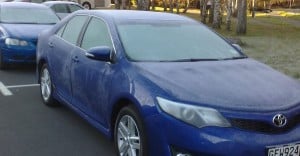When you learn to drive you will have some experience of hazardous conditions, but it’s unlikely that you will experience all kinds of difficult situations that you might encounter. For example, you could learn to drive in Auckland and have no experience of snow or ice until you want to go to Ruapehu skiing with your mates. Here are some common situations that almost every driver will experience at some time.
Snow and ice

First, be sure that your windscreen is clear. If the snow is falling there is a risk that there will be ice on the road. Black is is the most dangerous because you can’t see it and it is extremely slippery. The first question to ask yourself is whether you really need to travel. If not, don’t go. Most arterial roads will be cleared by a snow plough, or gritted to help stop ice forming. Side roads and rural roads may become impassable, though.
If you are driving in a hilly area then you will want to consider snow chains and perhaps owning a four-wheel drive vehicle. Riding a motorbike when it’s icy is not advisable and it’s almost certain you will have an accident.
Be cautious of white lines on the road as they will be extra slippery. Also, always be aware of where the sun has melted ice and snow on the road and where parts of the road might be shaded and therefore still icy.
If there’s a lot of snow and you notice your engine getting hot, it’s probably blocking the radiator grille. If snow gets so bad that you can’t make progress, don’t leave your car unless you can see help within 200m, such as a house with lights on. Park on the side of the road, tie something to your aerial in case the snow drifts and rescuers come looking. Keep the engine running if you can so that you can stay warm.
You can check out 21 tips for driving in snow here.
Salt and grit
Salt and grit are used to prevent ice build-up on the roads, but they are quite corrosive to your vehicle. Make sure you wash your vehicle regularly if you are driving in these types of conditions.
Roadworks
Roadworks can be a problem for your vehicle’s paintwork. You might see sign informing you to wash your car immediately otherwise wet concrete could dry onto the car. Other roadworks hazards are loose stones flying up and cracking your windscreen, less grip because the surface will often be metal (gravel or dirt), and pot holes which can damage your suspension.
Punctures
You are at greater risk of punctures around roadworks, accident sites and in rural areas where there is likely to be more road debris and sharp stones. If you find stones trapped in your tyre tread, get them out with a screwdriver as they have the potential to work their way into the tyre and eventually cause a weak spot or a puncture.
If the road is wet, items that might puncture your tyres will be able to enter the rubber more easily because the water provides lubrication for them. Try to avoid driving near the edges of the road when it’s wet.
Over-inflated and under-inflated tyres are also at more risk of getting a puncture. If you feel or hear pulsating or vibrating you might have picked up a nail in your tyre and have a slow puncture. If your steering suddenly goes heavy or pulls heavily to one side, you may have a puncture. If you drive with a flat tyre you will destroy the tyre and damage the wheel rim. Many punctures can be easily repaired at reasonable prices if you catch it early.
Livestock
In rural areas farmers move livestock around. Sometimes there are tunnels under the road, but other times farmers will have to drive livestock across the road between paddocks. Always comply with the farmer’s directions if you come across a herd of cows or sheep.
Movement of livestock and agricultural machinery will drop mud on the roads and this is treacherously slippery in the wet. Take extra care if you are on a motorbike. Mud will enter the grooves of the tyres and then the tyres will not disperse water as effectively leading to a risk of aquaplaning.
Livestock is constrained often by using cattle grids. These are especially slippery when it’s icy or wet. If you are braking when you cross a cattle grid it’s likely that your wheels will lock if you don’t have anti-lock brakes.
Fords
A ford is where a stream passes over the top of a road. Usually a concrete causeway is constructed and there will be depth indicators. You will see signs warning you of this. Most cars are capable of wading around 300mm, and in an SUV you might get 700-800mm. If the water is too high it could stop the engine. If the water comes above the level of your brake discs then you will need to dry your brakes afterwards by applying them a few times before you get going too fast. If you don’t do this, braking performance will be much less until the water evaporates.

